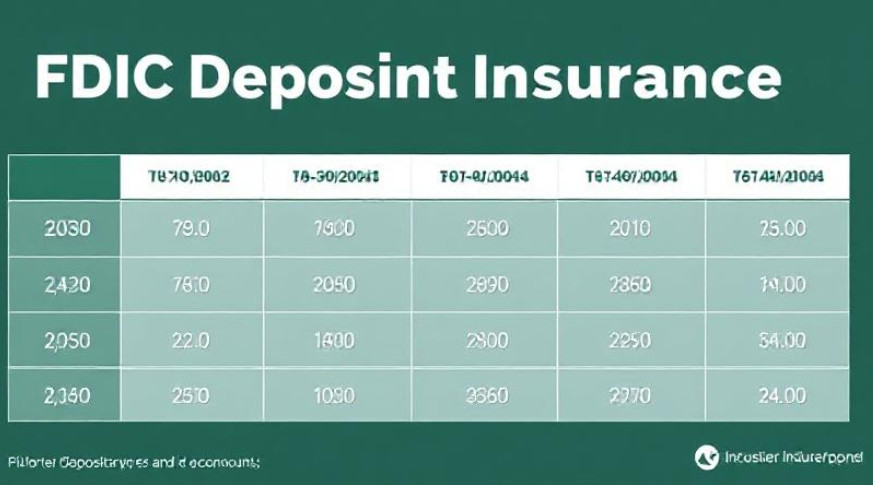A corporate bond is a debt security issued by private and public companies to raise capital for various business purposes. Investors who purchase these bonds receive regular interest payments, and the issuer pays back the face value of the bond upon maturity. Corporate bonds offer a middle-ground investment option, providing predictable income at manageable risk levels compared to stocks.
Corporate Bonds Structure:
1. Face Value (Par Value): Corporate bonds typically come in units with a face value of $1,000, representing the amount the issuer must pay the bondholder upon maturity. Some bonds may have a minimum purchase requirement, such as $3,000 or $5,000.
2. Maturity Period & Call Date:
• Maturity Date: The specific date on which the bondholder receives the original investment amount. Maturity periods can range from one year to 30 years.
• Call Date: Some corporate bonds have call dates, allowing the issuer to buy back the bonds before maturity if they no longer need the funds.
3. Corporate Paper (Short-Term Financing): Bonds with maturity periods of less than one year are known as corporate paper or short-term financing. These are often preferred by larger financial entities, such as banks, mutual funds, and hedge funds.
4. Prospectus: Before issuing new bonds to the public, companies, even private ones, must release a prospectus. The prospectus provides detailed information:
• Intended Use of Funds: Describes how the raised capital will be used.
• Term Details: Outlines the bond’s final maturity date, call date, and initial interest rate.
• Interest Payments: Specifies how and when interest is paid (quarterly, semiannually, annually, or as a lump sum during a buyback).
• Repayment Rights: Outlines bondholders’ rights in case of default or bankruptcy, detailing the order of repayment based on investor type and whether the bond is secured or unsecured.
Pros and Cons of Corporate Bonds:
Pros:
1. Regular Interest Payments: Corporate bonds provide a steady stream of interest income to investors.
2. Middle-Ground Investment: Positioned between low-risk government bonds and higher-risk stocks, offering a balance of security and returns.
3. Diversification: Allows investors to diversify their portfolios and manage risk.
Cons:
1. Interest Rate Risk: Bond prices may decrease if interest rates rise, affecting the market value of existing bonds.
2. Credit Risk: There is a risk of the issuer defaulting on interest payments or failing to repay the principal amount.
3. Market Risk: Bond prices can be influenced by market conditions and economic factors.
4. Limited Returns: Returns are typically lower compared to riskier investments, such as stocks.
History of Corporate Bonds:
The issuance of corporate bonds dates back to the stock market crash of the late 2000s, emphasizing the importance of diversification for investors. The corporate bond market has since provided a compromise for investors seeking predictable interest payments at manageable risk levels. Private and public companies use corporate bonds to fund capital projects, such as construction, property acquisition, equipment purchase, and inventory.
While corporate bonds offer advantages, investors should carefully consider individual bond drawbacks, including interest rate risk, credit risk, and potential market fluctuations.
Secured vs. Unsecured Corporate Bonds:
Corporate bonds can be categorized as secured or unsecured:
1. Secured Bonds:
• Guaranteed by Collateral: Secured bonds are backed by collateral, such as inventory, real property, or monetary assets.
• Legal Right to Collateral: In the event of bankruptcy, secured bondholders have a legal right to seize the collateral to recover their investment.
• Reduced Risk: Secured bonds are considered less risky for investors due to the collateral securing the debt.
2. Unsecured Bonds (Debentures):
• No Collateral: Unsecured bonds, also known as debentures, are not backed by specific collateral.
• Relies on Company’s Promise: Bondholders rely solely on the company’s promise to repay the debt.
• Higher Risk: Unsecured bonds are considered riskier for investors as they lack specific collateral backing.
• Potential Loss in Bankruptcy: In the event of bankruptcy, unsecured bondholders may not have the right to seize property, and they may face potential losses in principal and interest payments.
Corporate Bonds vs. Preferred Stocks:
Corporate bonds and preferred stocks share some similarities but have key differences:
1. Debt vs. Equity:
• Corporate Bonds: Represent a debt instrument, providing no ownership stake in the issuing company.
• Preferred Stocks: Confer ownership in the company and represent an equity investment.
2. Liquidity:
• Corporate Bonds: Trade on secondary markets, but preferred stocks often trade on stock exchanges, potentially increasing market size and liquidity.
3. Repayment Order in Bankruptcy:
• In bankruptcy, preferred stockholders are entitled to repayment before common stockholders but after corporate bondholders.
4. Exchange for Common Stock:
• Convertible Corporate Bonds: Can be exchanged for common shares under certain conditions.
• Preferred Stocks: Can be exchanged for common stocks at an agreed-upon ratio.
Types of Corporate Bonds:
Corporate bonds come in various forms:
1. Fixed-Rate Bonds:
• Carry a fixed interest rate for the entire life of the bond.
• Interest rate is determined by the issuer’s credit rating on the bond’s issue date.
• Typically make semiannual interest payments.
2. Variable-Rate Bonds:
• Interest rates change in response to fluctuations in long-term benchmark rates.
• Rates are determined by the company’s credit rating on the date of each interest payment.
3. Floating-Rate Bonds:
• Interest rates fluctuate with market benchmarks like Libor or the Federal Reserve’s federal funds rate.
• Changes in rates usually occur after each quarterly interest payment.
4. Zero-Coupon Bonds:
• Do not pay interest but trade at a discount to par value.
• At maturity, investors can redeem the bond for par value, realizing a profit.
Investors should carefully consider the characteristics of each type of bond and their risk tolerance before making investment decisions.
Callable Bonds:
• Call Feature: Callable bonds give issuers the right to buy them back before maturity, usually after an initial lockup period.
• Voluntary Buyback: The buyback is voluntary, and if exercised, the issuer pays par value and any unpaid accrued interest.
• Reasons for Calling: Companies may call bonds if prevailing interest rates have fallen, allowing them to secure lower rates on new debt.
• Impact on Investors: Bondholders whose bonds are called may settle for lower yields on replacement bonds, reducing overall yield.
Putable Bonds:
• Put Feature: Putable bonds allow bondholders to request early repayment of principal and accumulated interest after a set date.
• Exercise Scenarios: Bondholders may exercise the put in cases such as death or during inflationary environments.
• Reduced Risk: Putable bonds are considered less risky, resulting in lower interest rates.
Convertible Bonds:
• Conversion Option: Convertible bonds can be converted into a set amount of the issuer’s common stock.
• Equity Stake: Investors holding convertible bonds can secure an equity stake in the company.
• Conversion Restrictions: Convertible bonds have restrictions on when and how conversion to stock can occur.
• Sensitivity to Stock Price: Convertible bonds are more susceptible to the issuer’s stock price fluctuations.
Corporate Bond Ratings:
• Rating Agencies: Corporate bonds are rated by major agencies like Fitch, Standard & Poor’s, or Moody’s.
• Investment Grade vs. Non-Investment Grade: Bonds are categorized as investment grade or non-investment grade (junk). Ratings below BBB- are considered non-investment grade.
• Yield and Credit Rating: Bond yield is inversely proportional to the issuer’s credit rating; higher-rated bonds have lower yields.
• Risk and Return: Lower-rated bonds carry a higher risk of default but offer higher interest rates.
How to Buy and Sell Corporate Bonds:
• Primary Market: Institutional investors often participate in new bond issues on the primary market.
• Secondary Market: Individual investors can buy and sell bonds on the secondary market through brokerage accounts.
• Search Tools: Brokerages provide search tools to find bonds based on industry, yield, credit rating, and maturity date.
• Over-the-Counter Trading: Most corporate bonds are sold over the counter in the secondary market.
• Minimum Purchase Amounts: Bonds may have minimum purchase amounts, often around $5,000.
• Availability Through Funds: Some bonds are only available through mutual funds or exchange-traded funds (ETFs).
• Consideration of Bond Funds: Individual investors may find it more practical to invest in bond funds, providing diversification.
Investors should carefully assess their risk tolerance, investment goals, and market conditions before investing in corporate bonds or bond funds. Understanding the features and risks associated with callable, putable, and convertible bonds is crucial for making informed investment decisions.
Pros of Corporate Bonds:
1. Higher Rates of Return Than Government Debt: Corporate bonds offer higher yields compared to government-backed bonds with similar terms, providing investors with the potential for higher returns.
2. Relatively Predictable Returns: Corporate bonds are generally less volatile than dividend-paying stocks, offering more predictable returns. This can be attractive to investors seeking stability.
3. Purchasing Flexibility: Investors can buy corporate bonds in smaller units or opt for bond-heavy mutual funds and exchange-traded funds, offering flexibility in investment size.
4. Prioritized Repayments in Bankruptcy: In the event of bankruptcy, corporate bondholders have a higher priority for repayment of principal and interest compared to preferred or common stockholders.
5. Choice in Levels of Risk and Reward: Investors have the flexibility to choose bonds with different credit ratings, allowing them to balance risk and reward based on their risk tolerance and investment goals.
Cons of Corporate Bonds:
1. Limited Market Availability: Not all corporate bonds are available through brokerages, leading to reduced liquidity and potential price discrepancies.
2. Difficulty in Finding Some Bonds: Locating specific bonds can be impractical for regular investors, making it challenging to find desired investment options. Bond funds may be a more practical choice.
3. Inconsistent Access to the Primary Market: Regular investors may face challenges in the primary market, which is often dominated by professionals. This can result in higher costs on the secondary market, reducing effective yield.
4. Call Risk: Callable bonds pose a risk if the issuer decides to call back the bond, potentially leading to lower-than-expected returns and the need to replace the investment with a lower-yield option.
5. Risk of Interest Rate Changes: Floating- and variable-rate bondholders may face reduced interest payouts if prevailing interest rates fall, while fixed-rate bondholders may encounter challenges if rates rise.
6. Susceptibility to Inflation: Long-term, fixed-rate bondholders may not benefit from rising interest rates due to inflation. Diversifying the portfolio with inflation-protected securities or assets that tend to beat inflation is recommended.
7. Potential Loss of Principal: While rare, there is a risk of significant losses, up to 50%, in the case of corporate bankruptcy or default. Investors with a low risk tolerance may prefer more secure government-backed bonds.
Investors should carefully weigh these pros and cons based on their financial goals, risk tolerance, and market conditions before deciding to invest in corporate bonds.
What Happens If a Company Goes Bankrupt?
In the event of bankruptcy, corporate bondholders face the risk of receiving less than the original investment, known as a “haircut.” Secured bondholders generally have more protection than unsecured bondholders, and they may recover more or all of their investment.
Difference Between Corporate Bonds & Stocks
Corporate bonds are less liquid than stocks and are traded on the secondary market. While stocks provide ownership in a company, corporate bonds offer regular interest payments or guarantees of some return. Stocks, especially those without dividends, may not provide guaranteed returns.
Impact of Rising Interest Rates on Corporate Bonds
When interest rates rise, the prices of existing bonds often fall. This is because investors can earn higher interest rates on new bonds issued at the elevated rates, making existing bonds less attractive in comparison.
High-Yield Corporate Bond (Junk Bond)
A high-yield corporate bond, commonly known as a “junk bond,” has a higher risk of default. Bonds rated below BBB- on the S&P scale are considered junk bonds. While they offer high returns, they come with increased risk, and caution is advised, especially for regular investors.
What Happens When a Corporate Bond Matures?
At the maturity date, the issuer must repay the face value of the bond along with any unpaid accrued interest. Bondholders receive a cash payment, and there are no further obligations between the bondholder and the issuer.
Final Word on Corporate Bonds
Corporate bonds provide predictable returns and manageable risk, backed by reputable corporations. Recent improvements, such as enhanced market access and increased liquidity, have diminished some historical drawbacks. However, investors with extreme risk preferences or those seeking more flexibility in buying and selling may consider alternative options such as preferred stocks.





